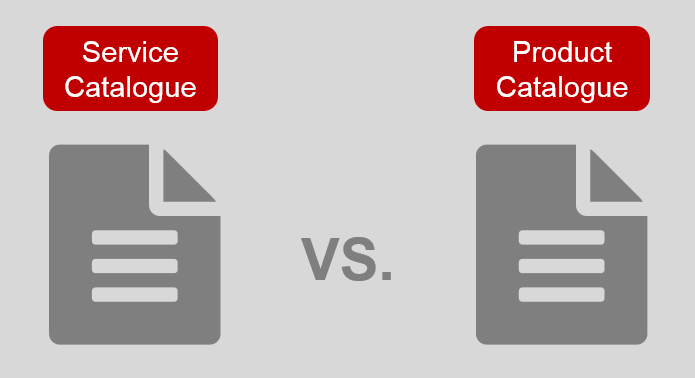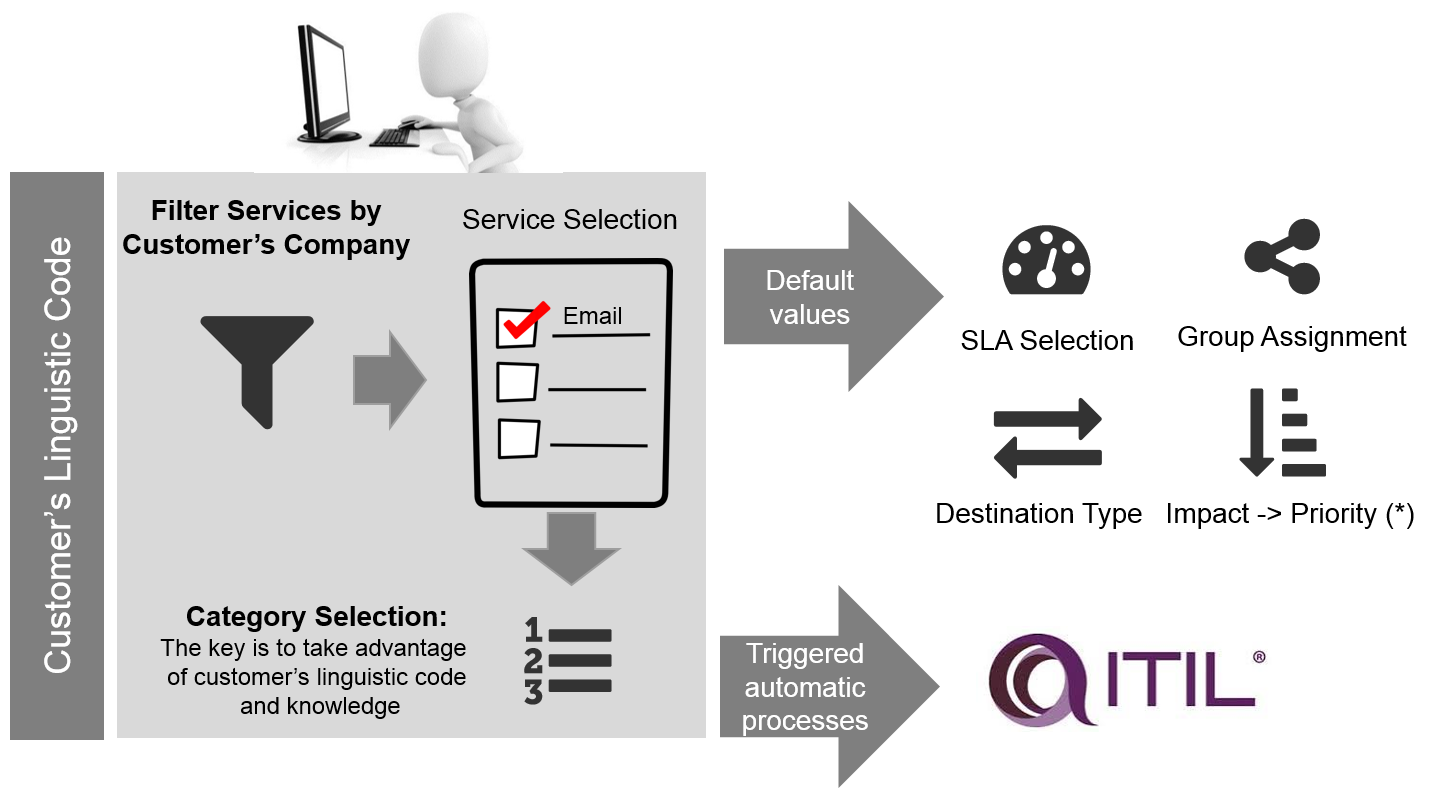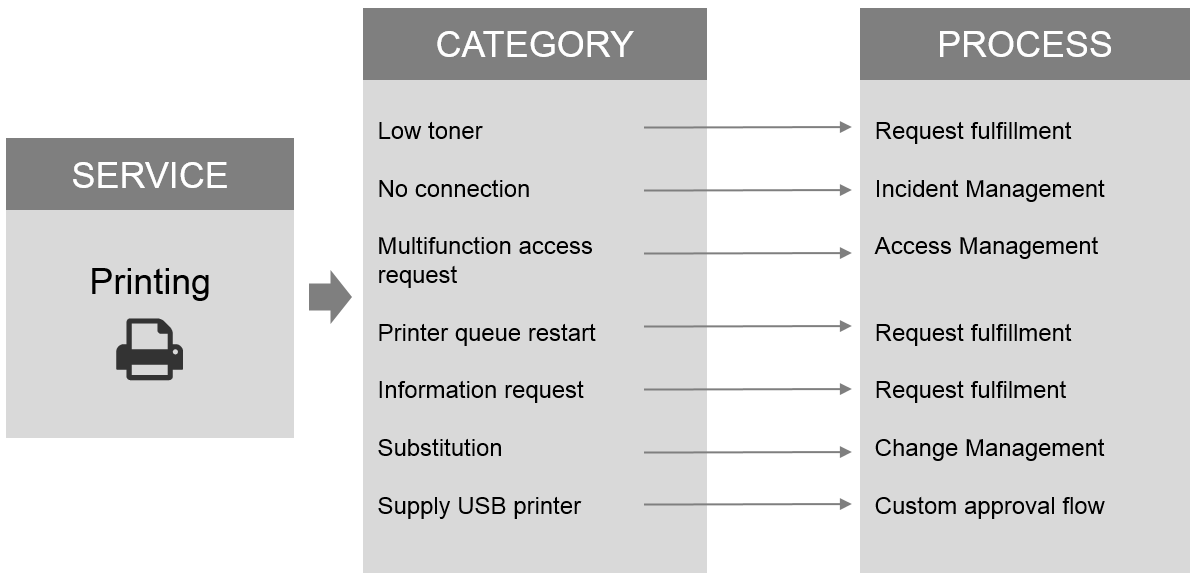The Importance of the Service Catalogue For an ITSM Solution
Understanding the real meaning of the service catalogue by the customers is the first challenge I usually meet during the implementation of an ITSM solution. It is not always so clear for the customers the distinction with the product catalogue and they often misunderstand the major component and essential part of the definition, the service precisely.
I had several discussions on the product catalogue management during the past years, when I was dealing with the implementation of ERP solutions, so I can state that The Product and The Service catalogues are definitely two different concepts and only the word “catalogue” is what they have in common.
The Etimology
Let’s try to analyze the words’ etimology to understand the meaning and clarify this issue.
Catalogue (or Catalog if you like!), catalŏgus derives from the Greek κατάλογος that means “list”, it represents a series of names or other items written or printed together in a meaningful grouping or sequence so as to constitute a record. The catalogue therefore does not reveal anything about the content. That is why the word that differentiates the two concepts is the one in the second part of the definition, i.e. products and services.
Product – from the Latin prodŭctu(m), past producĕre ‘to produce’ – is commonly defined as the tangible results of a production, natural or artificial, with an economical value (regardless the profitability).
Service – from the Latin servitium, that derives from servus that means “servant”, refers to not tangible goods, the action of helping or doing work for someone (not necessarily with economical enrichment).
Service Catalogue vs. Product Catalogue
For example the result that a Sales director expects from a service will be the “printing of the current price list to the sales force hand-out”; This simple target is achieved by providing a software to manage the PriceList version and offering a printing service. The service should not be confused with the printer or the software itself, which are simply devices to support the service. (this example is even more effective when you consider cloud services).
Based on the comparison with the product catalogue, we can underline an additional distinction by considering the stakeholders of the two catalogues. The product catalogue is usually designed to reach the market that is composed of clients, leads, or possible new buyers while the service catalogue refers to those who have already had a (direct or indirect) contact with the service provider.
The audience is therefore an important element to explain the differences between the two definitions. Let us think about the reason that a company creates its own product catalogue. It is quite unlikely that the catalogue is designed for a restricted group of potential buyers, because the ultimate goal is indeed new client aquisition and more profitability! On the contrary, we could limit the access to specific services based on a predefined access policy that we want to grant to each element in the list.
The Access Management Related To the Services
In the Service Operation manual ITIL v3 rev. 2011, it is clearly identified a specific process for the access service granting and restrictions: the Access Management. This ITIL process aims to grant authorized users the right to use a service, while preventing access to non-authorized users.
When we implement an ITSM tool (i.e. Erizone) it is therefore necessary to include during the creation of the service catalogue also the access policy, according to which the customer may or may not require certain performance.
The Service Value
Unlike the products, the services are not characterized by an intrinsic value. The value of the products is concrete and tied to something tangible and that usually manifests itself immediately with the purchase of the good. The value of the service instead corresponds to what you can get by using it. The value thus acquires a role in itself different from that of the product. The market demand and the supplier defines the prices of the products. The value of a service instead vary with the usage that the customer intends to do with it.
The value of the service in fact is defined by the customers and is constituted by a combination of features at an affordable price. The value finally allows customers to reach their goals and can change depending on the time and circumstances.
The Service Classification
The ITIL best practice makes the following classification:
- INTERNAL CUSTOMER-FACING SERVICE is provided by the same organization as its customer
- EXTERNAL CUSTOMER-FACING SERVICE is provided by a different organization from its customer
- CORE SERVICE delivers the basic outcomes desired by one or more customers
- ENABLING SERVICE is needed in order to deliver a core service
- ENHANCING SERVICE is added to a core service to make it more attractive to the customer
A Service Driven Solution
During the service catalogue creation, in the specific case of the EriZone projects, we are usually listing the customers who may request the service. This relationship occurs between the service and customer company, so that individual applicants may inherit (or not) the access to the services based on the company they belong to.
In EriZone all the processes revolve around the core concept of the service catalogue: to be more direct I would define it as a ‘service driven’ solution since the service is the source from which comes such a request or a workflow by also describing the way in which they will be processed for the entire life cycle and by recording the statistical data in the data warehouse results.
As a ‘service driven’ solution during the creation of the service catalogue, as described above, we should not forget the connection with the categories that will be used for the classification later used by handling the requests. The categories represent the details of the services and offer the possibility to use the linguistic code of the requestor to take advantage of the intelligentia (or the specific knowledge) available during the request creation. If you provided a clear list of categories, the benefits that you may have as a return are summarized by a high percentage of requests properly classified and rapidly solved.
The category, in EriZone, has also the aim to determine the process that will handle all the life cycle of the request (Incident MGMT, Request Fulfillment, etc.). If a customer enters a request for the printer, he should be able to select the proper category that will later trigger the corresponding process as in the example below.
The combination of service, customer and category is the key to assign the requests to the correct competence center. A well structured and dynamic combination ensures the proper involvement of the Service desk regardless of the implemented structure (Local, Centralized, Virtual, Follow The Sun, Specialized). In fact, it wouldn’t make sense to get a request sent to the central help desk office of a worldwide company if the user is located in a branch where there is a local IT service desk. A request of this type is usually delivered to the local branch that due to proximity to the facilities and thanks to the common language can provide a better and rapid solution.
Conclusion
In conclusion, an IT service catalogue contains information about deliverables, prices, contact points and processes for requesting a service. Typically, a catalogue will have two views, a customer-facing view from which business users can browse and select services and a technical view that documents exactly what is required to deliver each service in the catalogue.
The creation of the service catalogue is the initial stage of all our EriZone projects and its redaction quality is directly proportional to the success of the implementation. You must introduce an ITSM solution in respect of the needs of your company, because we should never forget what ITIL teaches
“Do not implement ITIL! Learn how to adopt and adapt to meet your Organization’s unique challenges.”











Thanks for sharing such an informative blog. Its really helpful in designing or choosing right kind of service catalog that represent entire business services and products wonderfully. Keep sharing it.